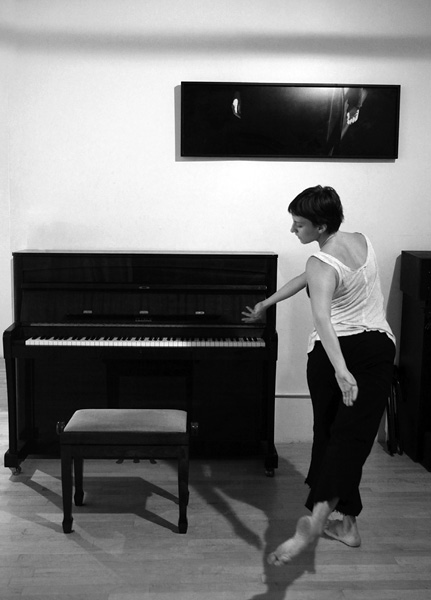
ANIMA
first performed on June 12, 2012
The FAR Space, New York, NY
performed 62 times in 2012
KRISTIN HATLEBERG
Romain Chat, Cecilia Fontanesi, Marielise Goulene, Fred Hatt, Dai Jian, Pedro Jimenez, Mary Madsen, Annie Now, Molly Schaffner
Brooklyn, NY
374923862k374923862r374923862i374923862s374923862t374923862i374923862n374923862h374923862a374923862t374923862l374923862e374923862b374923862e374923862r374923862g374923862@374923862g374923862m374923862a374923862i374923862l374923862.374923862c374923862o374923862m
kristinhatleberg.com
ANIMA
KRISTIN HATLEBERG
Many artists self-identify as being process-oriented and place immeasurable value on their individual creative process. Let’s take the old illustration of a river representing a body of work—in that river, the presentations we give of our work are the whitecaps. How can we share more than the whitewater? How can we share the value of the river, its full current? How can our understanding of our work extend beyond ourself?…How can we be always performing, through the whole arc of the creative process; meanwhile, how can our audience always witness, any time, any place?
The word for soul in Latin is anima, the root of animal and animated; in Greek it is psyche. As humans, we naturally absorb our physical environments and imprint them on everything we create. In each performance of “Anima,” dance was used as a physical rendering of the performer’s perceptions of what it means to be human, animal, mortal.
For each performance, the dancer would select a written question as the focal point of their reflection, and would start by writing continuously in response to the question. When they felt ready, the dancer put down the pen and performed their dance. At the completion of the dance, the dancer would again pick up their pen, and so would every audience member. Simultaneously, everyone present would write continuously in reflection on what they had just experienced. Sometimes the witnesses would know the question; sometimes they would not. But always, this cycle and its ritual of exchange formed the event “Anima.”
Another element of every performance was full documentation. Full: meaning all the writings and drawings by all the dancers and all the witnesses was collected. Sometimes there was video documentation; sometimes an illustrator documented; sometimes, a photographer. After each performance, the writings and visual documentation were compiled on a privacy-protected blog and shared with all who had been present. In this way, the perspective from all three roles could commingle and be available for further reflection, accessible any time, any place.